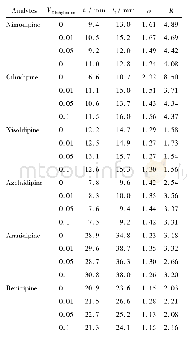《Table 2.Influence of rolling reduction on the thickness re-duction error of sheet metal in the nume
 提示:宽带有限、当前游客访问压缩模式
提示:宽带有限、当前游客访问压缩模式
本系列图表出处文件名:随高清版一同展现
《Influence of a multi-step process on the thickness reduction error of sheet metal in a flexible rolling process》
The material is 1050 aluminum alloy,the dimensions of the sheet metal are 100 mm×200 mm×1.8 mm(width×length×thickness),the roll gap heights are 1.57,1.53,1.49,and 1.45 mm(in order),and the other processing parameters are the same.The plastic strains of processed convex surface parts with different rolling reductions are shown in Fig.6.In the transversal direction,the plastic strain is a gradient,which is related to the roll gap distribution.Thus,the thickness of the processed convex surface part decreases from the outside to the inside.In the longitudinal direction,near the two ends,the plastic strain gradient has an ending effect.Far from the two ends,the plastic strain is stable and continuous,so the forming quality is better.The plastic strain value increases as the rolling reduction increases.The influence of rolling reduction on the thickness reduction error is shown in Table 2,which reveals a difference between the minimum thickness of the processed convex surface part and the roll gap height.With increasing rolling reduction,the difference increases.This behavior is attributed to the plastic deformation of the sheet metal increasing and the degree of work hardening increasing with increasing rolling reduction.The thickness reduction becomes more difficult;thus,the difference between the minimum thickness of the processed convex surface part and the roll gap height is increasing.
| 图表编号 | XD0028409500 严禁用于非法目的 |
|---|---|
| 绘制时间 | 2019.01.01 |
| 作者 | Yi Li、Ming-zhe Li、Kai Liu |
| 绘制单位 | Dieless Forming Technology Center, Roll Forging Institute, Jilin University、College of Materials Science and Engineering, Jilin University、Dieless Forming Technology Center, Roll Forging Institute, Jilin University、College of Materials Science and Enginee |
| 更多格式 | 高清、无水印(增值服务) |
查看“Table 2.Influence of rolling reduction on the thickness re-duction error of sheet metal in the numerical simulation”的人还看了
-

- Table 2 Influence of different percentages of alkaline additives on the chiral separation of dihydropyridine calcium ant





